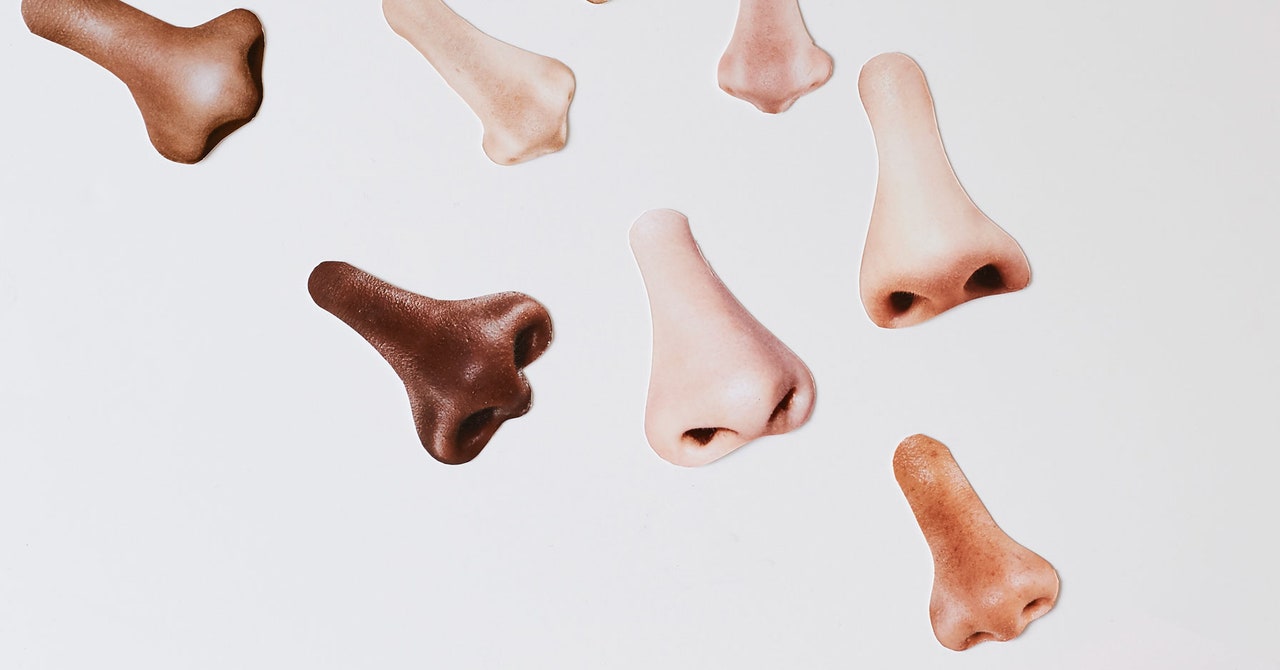
The team posted its findings to the preprint server bioRxiv in September, and the paper is currently being peer-reviewed at a scientific journal.
“One thing we want to do in olfactory science is understand how it is that humans perceive odors,” says Krishnan Padmanabhan, an olfactory neuroscientist at the University of Rochester School of Medicine who isn’t involved in Osmo. He says the group’s odor map points to a way to do that. “It’s really striking what they were able to accomplish.”
The glass vials Wiltschko had me smell contained the same scents those Monell panelists had sniffed. He says Osmo is in active talks with several fragrance companies to license some of them.
Some novel scents are more commercially viable than others, says Christophe Laudamiel, a French master perfumer who serves as an adviser to the company, and who guided me over Zoom as I smelled the different odors. (There are just 600 perfumers in the world, according to New York-based International Flavors & Fragrances, one of the major companies that concocts new scents.) For example, there are very few molecules available that smell like the ocean, Laudamiel says, so a new sea scent would be highly desirable. He’s not sure how the fragrance industry would use the chili pepper one, but he could see it being used for food flavoring.
“The industry is very small, and there are only a few companies that have embarked on finding new molecules,” he says. “It takes a lot of serendipity to find a new molecule with a new scent.”
And the failure rate is high. Not only do those molecules have to smell good, they also have to be safe and biodegradable. Companies might test a thousand molecules a year just to bring a few to market that check all these boxes. When Wiltschko sent him the molecules Osmo had created, Laudamiel said: “You realize you’ve created an alternate universe of perfume ingredients.”
There is another problem Wiltschko thinks Osmo’s technology can solve: creating a better mosquito repellent.
Mosquito-borne diseases like malaria and dengue fever are responsible for more than 700,000 deaths annually, according to the World Health Organization. Female mosquitoes feed on human blood and are attracted to the smell of skin. Most chemical repellents, including DEET, which is considered the gold standard, work by confusing mosquitoes’ olfactory signals, preventing them from finding their next target.
But DEET has some drawbacks. It has to be used at high concentrations, it can degrade plastic, and it can cause skin irritation. It’s also possible that mosquitoes could develop resistance to DEET, as they have to other chemicals, says Chris Potter, a neuroscientist at Johns Hopkins who studies the mosquito olfactory system. “I think there is a good reason to look for additional repellents,” says Potter, who isn’t involved with Osmo. “We always need to have a backup.”
In 2020, the Environmental Protection Agency approved the first new repellent in 11 years—a naturally occurring chemical called nootkatone, which gives grapefruit its characteristic scent. But Wiltschko and his team at Google thought they could use their machine-learning system to find new ones.
First, they needed a large data set of scent molecules so they could train their model to recognize the correlations between a compound’s structure and its effectiveness as a repellent. But they could only find a few dozen mosquito repellents described in recent scientific literature. So Wiltschko tracked down a US government report from the 1940s, when scientists tested around 19,000 compounds for their effectiveness. That effort ranked these compounds according to how well they worked and led to the discovery of DEET. Wiltschko and his team digitized the data set, then trained their algorithms on it.


